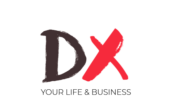When you hear why most businesses shut down, you’ll often hear things like:
“They didn’t have enough customers.”
“The product wasn’t good enough.”
Or, “They weren’t profitable.”
But here’s the uncomfortable truth:
Most businesses don’t fail because of profit. They fail because of cash.
The Illusion of Profit
Back in 2014, I thought I had it all figured out.
Sales were rising.
My revenue graph was climbing.
My profit and loss statement? It looked amazing.
So I did what many ambitious entrepreneurs do—I scaled up.
I hired more people.
Moved into a nicer office.
Invested in new tools and systems.
But one payday, I opened my banking app… and my stomach sank.
There wasn’t enough to pay my people.
How was that possible when my business was “profitable”?
The Receivables Trap
I started digging into the numbers. What I found was simple… but deadly.
Most of my income was still in receivables.
Promised money—not paid money.
Some clients were on 30-day terms. Others 60.
But here’s the thing—my bills didn’t wait.
Payroll hit biweekly.
Rent was monthly.
Suppliers wanted their payments on time.
It felt like I was trying to breathe underwater… with a full oxygen tank, I couldn’t open.
I wasn’t managing cash. I was managing hope.
The Shift That Saved My Business
That experience almost crushed me—but it also became a turning point.
I went back to the basics.
Back to first principles.
I stopped relying on profit as my guide.
And I started tracking the one metric that truly keeps your business alive:
👉 Cashflow.
I built a simple system to track what was coming in, what was going out, and when.
And that single shift changed everything.
10 Cashflow Habits That Saved Me
Let me share the 10 cashflow strategies I use and teach other entrepreneurs:
1. Track Cash Weekly
Every Monday, I update a simple cash forecast. Know your inflows, outflows, and available balance.
2. Separate Profit from Cash
If it’s not in the bank, it’s not real. Don’t confuse “income” with “cash.”
3. Incentivize Early Payments
Offer a 3–5% discount for early settlements. Many clients will take the deal.
4. Stretch Payables Smartly
Negotiate longer terms with suppliers without burning bridges.
5. Build a Cash Reserve
Keep at least one month’s worth of operating expenses in reserve.
6. Automate Collections
Use invoicing tools with automatic reminders. Collections shouldn’t be emotional.
7. Break Projects Into Milestones
Instead of collecting at the end, invoice in stages: 30/40/30.
8. Audit Your Subscriptions Monthly
Cancel tools and services that no longer serve you.
9. Delay Non-Essential Spending
Pause upgrades until your cash position strengthens.
10. Forecast 60 Days Ahead
Always look beyond today. Plan your cash position two months in advance.
You Don’t Need a Finance Degree
Managing your cash doesn’t require a CPA license or an MBA.
You just need visibility, discipline, and a simple system.
That’s exactly why I created Accounting 101 for Business Owners—a no-fluff digital course that helps entrepreneurs like you:
Understand financial statements
Avoid the cashflow traps I fell into
And build a business that’s both profitable and sustainable
Ready to take control of your cash?
👉 Click here to enroll in Accounting 101 today
Profit is just a story on paper.
Cash? That’s the truth.
